1931 Ford Model AA truck beautifully restored
Posted by Chris Graham on 21st October 2022
Mike Neale tells the story of a remarkable 1931 Ford Model AA truck restoration, with a surprising twist when it came to the sign-writing.

Rod Thompson’s beautifully-restored 1931 Ford Model AA truck.
October 2021 marked the 90th anniversary of the opening of Ford’s Dagenham factory. Construction had begun in May 1929, with Henry Ford’s son Edsel cutting the first sod although, ignominiously, he bent the spade when it hit a large stone. No matter, it was soon hammered flat on a nearby railway line to allow the ceremony to continue – but remember, don’t try this at home, kids!
The build took two and a half years to complete, alongside a deep-water section of the River Thames, on Essex marshland. A massive number of concrete piles had to be sunk deep into the ground to build the factory on that site.
It wasn’t Ford’s first UK factory – that was opened at Trafford Park, in Manchester, in 1911 and closed a week before the Dagenham plant became operational – but it was considerably bigger, and the words ‘Dagenham’ and ‘Ford’ became almost inseparable. Indeed the expression ‘Dagenham dustbin’ was later rather unfairly used by some to refer disparagingly to cheap, mass-produced Ford cars, and the Cortina in particular.
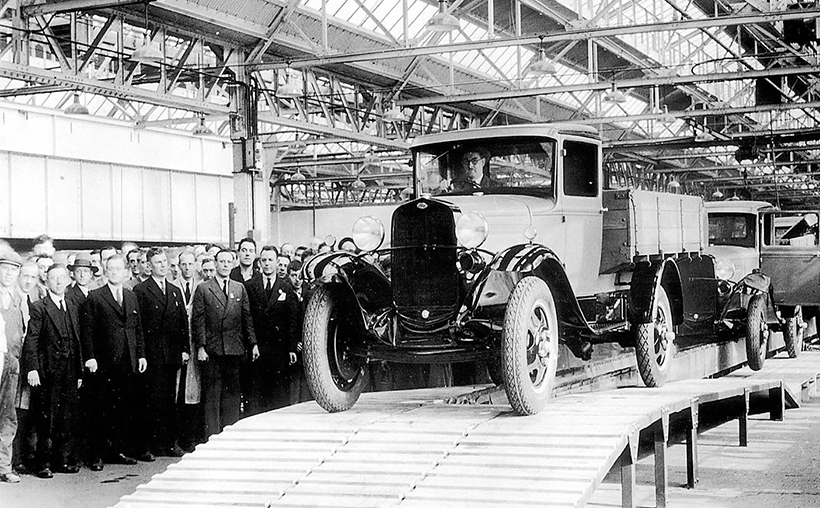
The very first vehicle off the Dagenham production line was this Model AA truck, driven by Ford’s general manager, Rowland Smith. (Pic: Ford Great Britain)
In classic Ford style it was also as self-contained as possible – to the extent of having its own power station. The location was also chosen, at least in part, due to the close proximity of a large new London County Council housing estate, intended to improve the living conditions of East Enders from the most deprived areas. For Ford, though, this also provided a workforce on the doorstep.
The first vehicles to emerge from Dagenham weren’t cars at all, however. When the factory opened on October 1 1931 in the midst an economic depression, Ford car sales weren’t doing well, and it was its commercial vehicles that were keeping the company afloat in Britain.
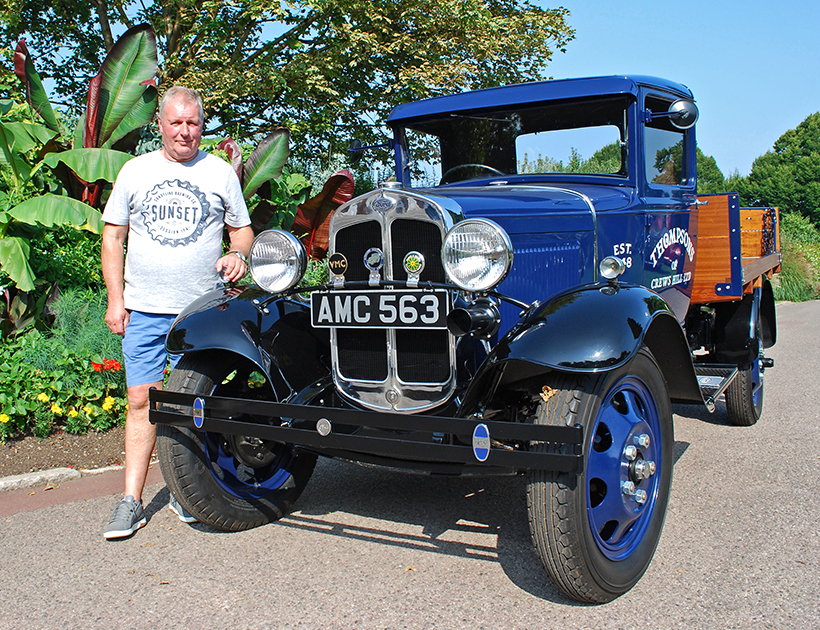
Brian Sibley restored the Ford for his employer, Rod Thompson.
It was thus a Model AA Dropside Truck that first rolled off the production line at the new plant, driven by Ford of Britain’s general manager, Rowland (later Sir Rowland) Smith, and dispatched to Ford dealers, Quicks of Manchester. Over 4,500 Ford commercials were built in the first three months. The number of Ford Model A cars built in the same period was… five.
The Model A Ford had first appeared in December 1927, after Henry Ford had finally been persuaded that he couldn’t continue building the ‘Tin Lizzie’ Model T forever. A commercial version of the Model A was also produced in the form of a 10cwt light van, using the 103½in wheelbase car chassis and front end.
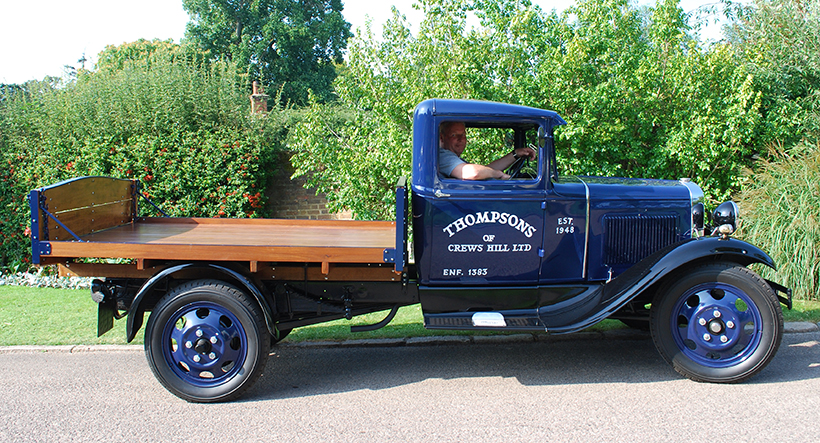
This Model AA has a 131½ inch wheelbase.
The engine was a 3.2-litre in-line four-cylinder sidevalve unit rated at 24hp. Unfortunately, under the British car tax regime based on engine horsepower (which had been introduced in 1921), that meant that it was quite heavily penalised. Ford responded by producing a 2.1-litre, 14.9hp version, with such cars and vans known as the Model AF, which reduced both the tax and the performance quite significantly. Neither version could, therefore, be considered optimal from a sales point of view.
The larger 30cwt Model AA truck had a wheelbase of 131½in, and could also be ordered with a van body of 150cu.ft. or indeed a wide range of body styles, from horsebox to refuse truck. The cab was shared with the Model A. It was also fitted with the same 3.2-litre sidevalve engine as the Model A. The three-speed crash gearbox was optionally available with an epicyclic secondary gear, which resulted in six forward and two reverse speeds. A torque tube-enclosed prop shaft connected to an overhead worm gear-driven axle.

The truck has a replacement engine, taken from a Model B Ford, but it’s the same 3.2-litre sidevalve as the original.
The rear suspension had two longitudinal semi-elliptic cantilever springs. Mechanical drum brakes operated on all four wheels, which were originally wire wheels but, from 1929, disc wheels were fitted. The fuel tank was on the bulkhead in front of the driver, with the fuel gauge taking a direct feed from it.
Later in 1929, a 2-ton version of the Model AA was launched, which either had the same 131½in wheelbase, or was a long wheelbase version, at 157in. Twin rear wheels were standard. A new four-speed crash gearbox was fitted to the two-tonner and subsequently also to the 30cwt Model AA.
Production of the Ford Model AA ended in 1932, when it was replaced by the Model BB. This wasn’t quite the end of the Model AA, however, as it was then built under licence by GAZ in the Soviet Union, until as late as the 1950s.

New Ford-branded step, as originally fitted, was surprisingly easy to source.
Over 10 million vehicles were built at Dagenham over a 71-year period, with the last being a Ford Fiesta in 2002. Today, diesel engines are still being manufactured at the plant, mainly for Transit vans and other commercial vehicles.
The 1931, Dagenham-built the Ford Model AA seen here is very similar to that first one driven off the production line in October of that year. It’s owned by Rod Thompson, although he has never actually driven it. The regular driver and restorer of the vehicle is Brian Sibley, who works for Thompsons of Crews Hill, usually maintaining its fleet of modern Volvo trucks for the soil, turf and paving business near Enfield. Rod’s grandfather, Roderick Thompson, founded the family business in 1948, passing it to his parents in 1975, with Rod taking it over in 2009. They have restored three different classic vehicles, and are currently working on a 1950s Ford pick-up.
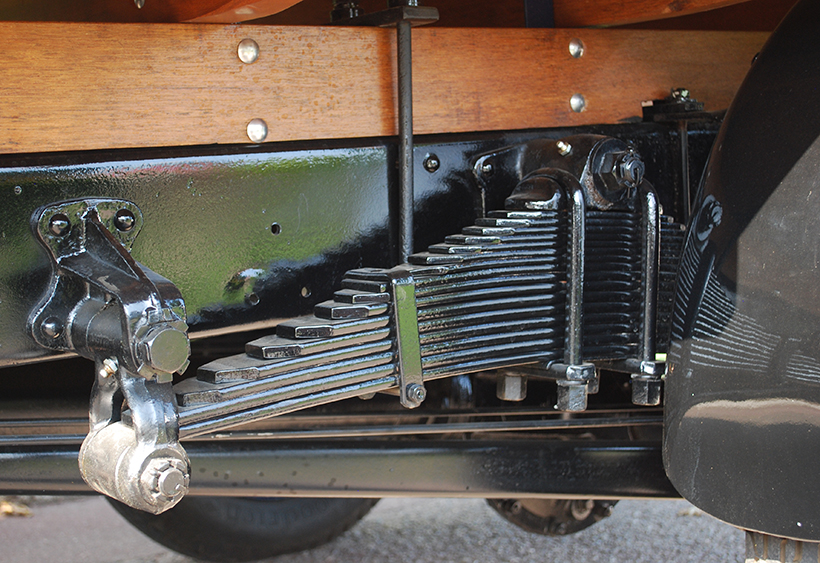
The original springs had broken, so new ones had to be made.
The Model AA truck was discovered by Brian about eight years ago, in a barn just up the road from Thompsons’ depot, where it had been languishing for the previous 30 years. “We had no idea that it was there all that time. We weren’t particularly looking for one, but it just turned up,” explains Brian. “It was originally a stonemason’s truck, operating locally in Edmonton.”
When it was dragged out of the barn, it was found to be pretty tatty and most of the springs were broken, so it looked rather sad. Brian had to tie all the springs together with rope to get it back to the workshop. “The tyres on the truck had gone solid, so they stayed in shape, but wouldn’t actually hold any air,” recalls Brian. Fortunately, new tyres for the truck were available from Vintage Tyres.
Brian got to work on the restoration, being given free-reign by Rod Thompson to do what was needed.
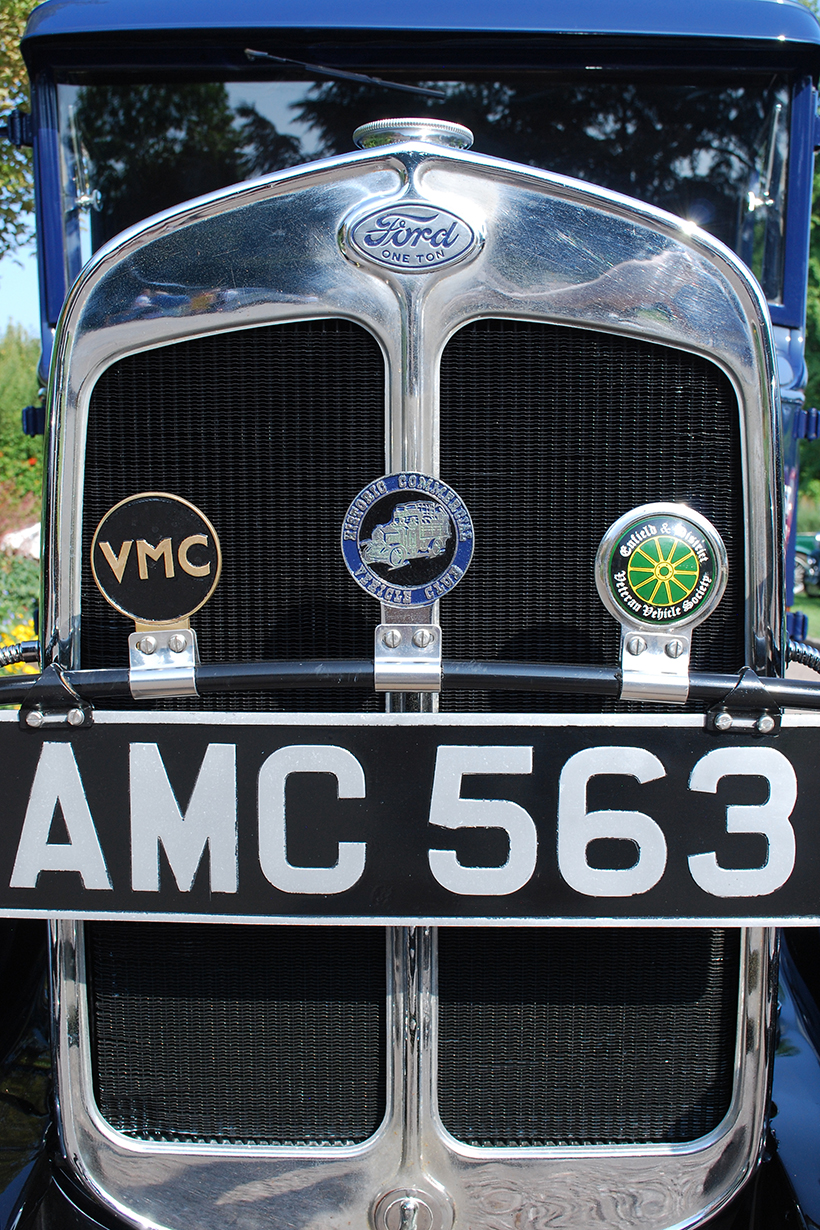
A grille with the central, vertical bar is unique to British-built Model AAs.
The original wings were retained but straightened out and repaired by Brian. Quite a lot of the original timber on the rear body was also kept, although the wooden floor itself is new. The suspension had to be replaced, with a lot of parts having to be made by Brian.
“There is a place in Coalville that specialises in importing stuff for old Ford trucks, O’Neill Vintage Ford. You can get most parts for Model A Fords, but not as much for the Model AA,” notes Brian. “The grille on this Model AA, with its central vertical chrome bar, is unique to British-built trucks.”
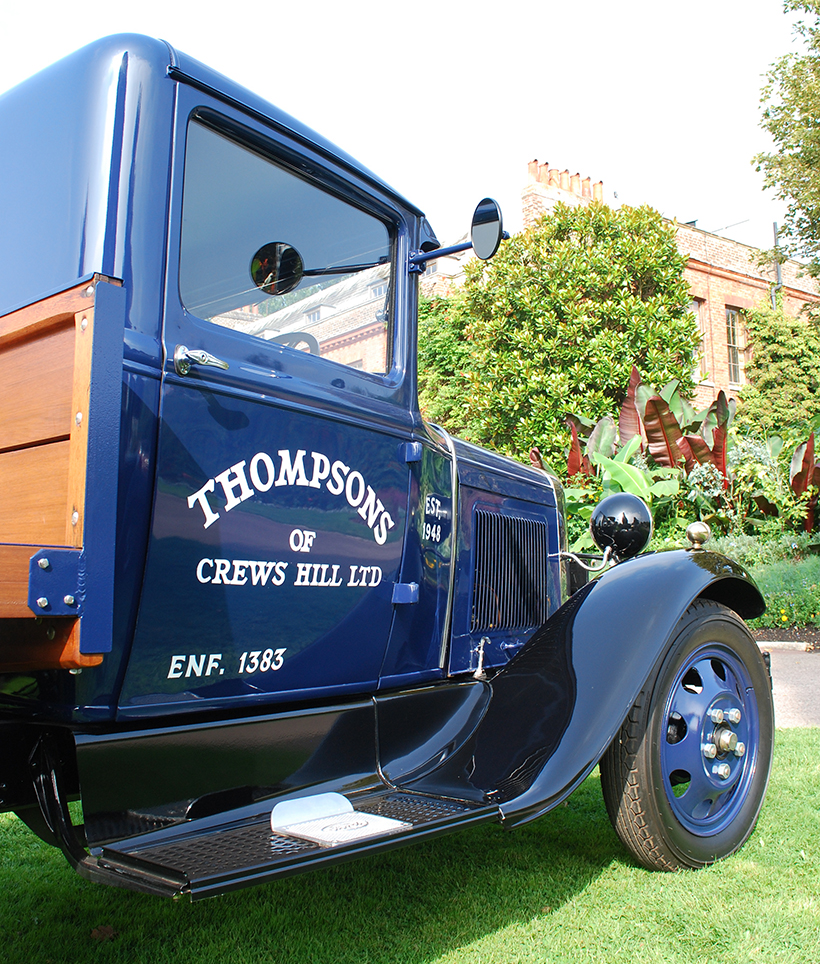
The Model AA shared its cab with the Model A. Sign-writing was carried out by a well-known individual whose father, allegedly, ‘was a desert rat, khaki shorts and a khaki hat…’
The original speedo was retained but fitted with a new chrome surround. The door handles and window winders were replaced. Other brand-new parts included a complete wiring loom, and the Ford branded steps on the running boards. The interior has been re-trimmed.
“I repainted the truck using two-pack paint in a dusty shed and varnished the wood,” Brian tells me. It has come out very well despite that! Overall, it took five years to restore the Ford.
The engine had been replaced at some point during the truck’s life, with one from a slightly later Model B, but the same size as the original. This had been reconditioned in 1966 and was done again two years ago. The odometer now shows just under 90,000 miles, which is believed to be correct, and not having gone around the clock.

The interior features original dials, but a new chrome surround was fitted. Seat was also re-trimmed.
So, what’s the truck like out on the road? “There are a lot of leaves on the suspension, but it bounces around everywhere,” laughs Brian. “It has a three-speed crash gearbox, which is OK changing up, but you have to get it just right to come back down. It has rod brakes, which are OK, as it doesn’t go that fast. It will cruise at around 45mph. It has one wiper, which is very slow, being vacuum-operated, and no windscreen washer. I don’t take it out in the rain!”
One job that Brian didn’t undertake himself was the sign-writing, which was added about a year ago. This was done by Dave Peacock, who is much better known as one half of Cockney musical duo Chas & Dave. Dave was a sign-writer by trade before his singing career took off, and is still doing it. Chas Hodges sadly died in 2018.
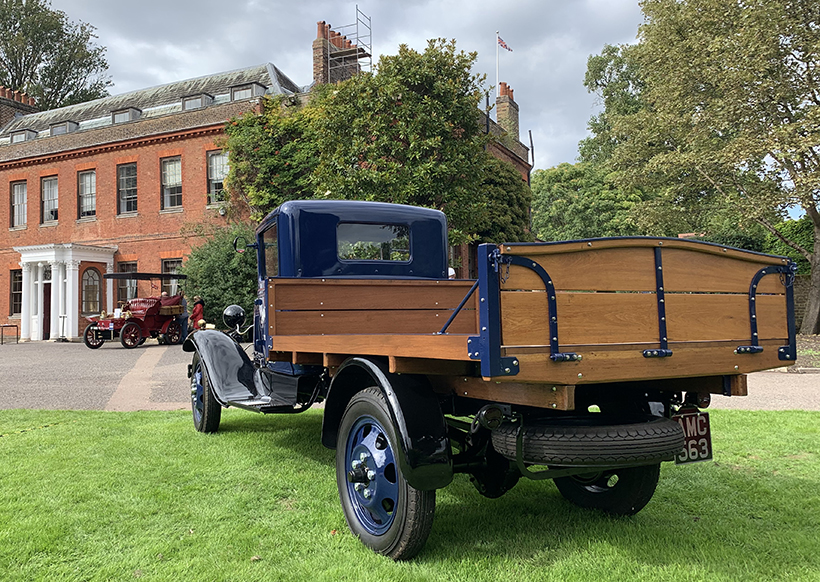
There are not very many Ford Model AAs in Britain, especially not ones that were built here. Since being restored, this truck is generally just used for shows. Now that a few more are taking place, hopefully it will be seen out more in 2022. Thanks to Brian Sibley for taking the time to tell me the story of this immaculate 90-year-old truck, and to Capel Manor Gardens in Enfield for the photoshoot location.
This feature comes from the latest issue of Classic & Vintage Commercials, and you can get a money-saving subscription to this magazine simply by clicking HERE
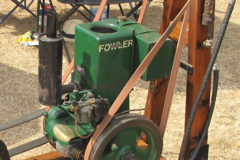
Previous Post
Rare 1930s sheep shearing set spotted at car show!
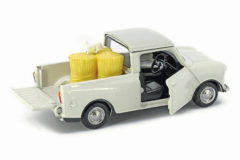
Next Post
New diecast and plastic scale models reviewed



